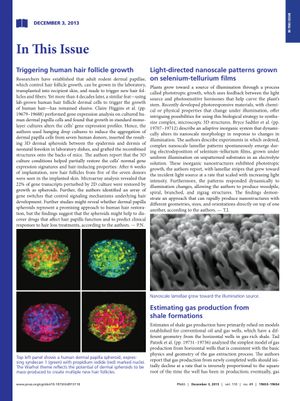In This Issue
December 2013
in “
Proceedings of the National Academy of Sciences of the United States of America
”
human hair follicles dermal papilla cells gene expression analysis monolayer cultures hanging drop cultures 3D dermal spheroids epidermis dermis neonatal foreskin microarray analysis gene transcripts hair restoration hair papilla function hair loss treatments hair follicles dermal cells gene analysis 2D cultures 3D cultures skin layers foreskin hair growth hair function hair treatments

TLDR Scientists found a new method using 3D cell cultures to grow human hair which may improve hair restoration treatments.
In a study published on December 3, 2013, Claire Higgins et al. investigated the growth of human hair follicles using lab-grown human dermal papilla cells. They performed gene expression analysis on these cells and discovered that standard monolayer cultures altered their gene expression profiles. To overcome this, they used hanging drop cultures to create 3D dermal spheroids from cells of seven human donors. These spheroids were then inserted between the epidermis and dermis of neonatal foreskin in laboratory dishes and grafted onto mice. After 6 weeks, new hair follicles were observed in the skin implanted with cells from five of the seven donors. Microarray analysis showed that 22% of gene transcripts altered by 2D culture were restored in the 3D spheroids. The study suggests that 3D dermal papilla spheroids might be a promising approach for human hair restoration and could help in discovering drugs that affect hair papilla function and in predicting clinical responses to hair loss treatments.





